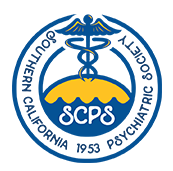Letter to Attorney General Bonta
Last week, we previewed for you a draft letter to California Attorney General Rob Bonta regarding the dismantling of SAMHSA. The letter was finalized and sent to the Attorney General. You may view the letter here. Almost immediately upon receipt, the Attorney General’s staff reached out to schedule a meeting with CSAP’s officers: Board Chairman Rod Shaner (SCPS), Board Chairwoman Mina Hah (CCPS), Government Affairs Committee (GAC) Chairwoman Parnika Saxena (NCPS), GAC Vice-Chairman Aaron Meyer (SDPS), and CSAP state lobbyists Paul Yoder and Dylan Elliott. This meeting will occur next week and we will of course keep you posted.
Op-ed
The Sacramento Bee has published an op-ed by CSAP member Dr. Eric Rafla-Yuan (SDPS) on this same issue. Here it is in its entirety.
“Most people have never heard of the Substance Abuse and Mental Health Services Administration. But if you or someone you love has ever struggled with mental health, addiction, trauma or even suicidal thoughts, chances are the administration has already helped you — even if you didn’t know it.
This critical federal organization, however, is now at risk under the Trump administration.
The Substance Abuse and Mental Health Services Administration is the federal agency that funds and helps coordinate mental health and substance use services across the country. In California and across the nation, we all rely on this administration to keep many of our most critical programs running — from suicide prevention hotlines and school-based mental health services to drug treatment programs and trauma-informed care for children, veterans and survivors of violence.
One program that has touched the lives of more than a million individuals and families across California is the 988 Suicide & Crisis Lifeline, which has fundamentally transformed how we respond to people during a mental health emergency. Counselors working for 988 provide lifesaving services around the clock.
We know that Californians rely on the 988 program— in fact, about one out of every eight calls to 988 originates from California. In February of 2025 alone, more than 30,000 Californians reached out and got support from 988 crisis counselors. And thanks to a new state law, the Miles Hall Lifeline Act, 988 in California is more than just assistance by phone, it’s connected to real-time mental health services on the ground.
But eliminating the Substance Abuse and Mental Health Services Administration puts this entire system at risk at a time when suicide remains a leading cause of death among young people. This is especially urgent for Sacramento, which has the highest death from suicide rate of any of urban county in California.
Dissolving this administration — as the Trump administration is proposing to do — would be devastating. Yet 50% of administration staff, including key leaders, have already been fired in the last few weeks, and more staffing cuts are expected. Some congressional leaders, including Senator Alex Padilla, who co-chairs the Senate Mental Health Caucus, have warned that closing down this administration would have disastrous ramifications for millions of Americans.
Every year, the Substance Abuse and Mental Health Services Administration provides hundreds of millions of dollars in grants to local communities, and California is one of the largest recipients. In the past year alone, our state received nearly $700 million from this administration to support mental health and substance use treatment, recovery and prevention efforts. All of California’s 58 counties and more than 300 local organizations and agencies received funding for essential services. These investments include community mental health clinics, overdose prevention and treatment programs addressing California’s opioid and fentanyl crisis, suicide prevention programs, 988 and mobile crisis response teams that meet people where they are.
This administration also supports services helping people transition out of homelessness, hospitalization or incarceration and reintegrate back into their communities. In addition, it funds school- and campus-based mental health services across California, as well as workforce development initiatives that train the behavioral health professionals our communities urgently need.
We’re not talking about abstract policy here, we’re talking about real people: the high school student with depression who gets help through a school counselor instead of dropping out; the person struggling with pain pills or fentanyl who finally finds a treatment program; the family worried sick about their loved one who call 988 and get help; the senior in a rural part of the state who talks to a counselor via telehealth instead of suffering alone; the veteran battling post-traumatic stress disorder who, through a peer-run group, finally finds relief from the horror of reliving traumatic experiences every night.
People already wait too long for help, and without the Substance Abuse and Mental Health Services Administration, critical services might fully disappear. That means more people in mental health crisis waiting in busy emergency rooms, more individuals battling addiction with nowhere to turn and more lives unraveling in plain sight — the kind of heartbreak we’re already witnessing on our sidewalks, in our parks and outside our businesses.
As a psychiatrist who works on the front lines of mental health care in California’s second largest county, I see what happens when people don’t get the help they need. I’ve had patients wait hours — or sometimes repeatedly over days — in emergency departments because there’s no available psychiatric bed. I’ve met families doing everything right, calling for help and still struggling to find care for their loved ones.
Preserving the Substance Abuse and Mental Health Services Administration is about protecting the services that keep people alive, housed, stable and connected to care. From classrooms to clinics to crisis lines, this administration’s impact is everywhere — quietly holding together a system that so many people depend on. Eliminating it would be a profound and preventable failure for California and every state across the nation.
